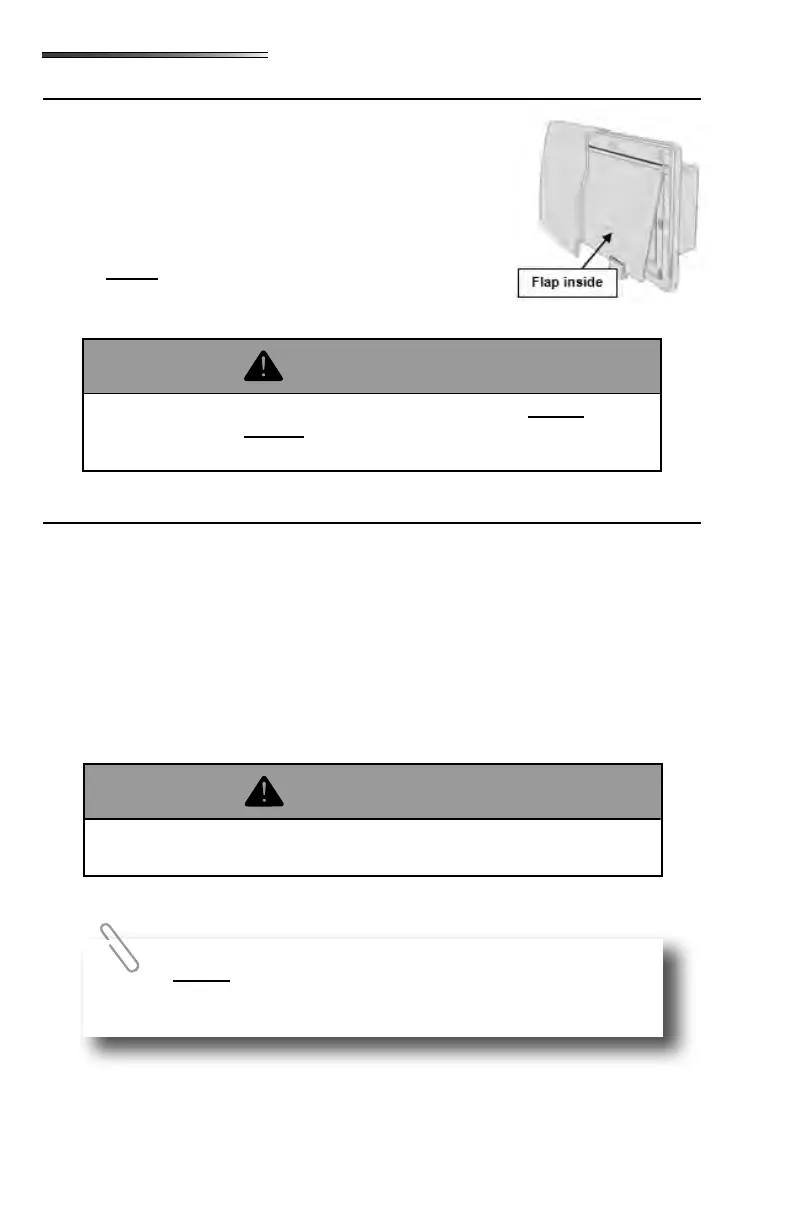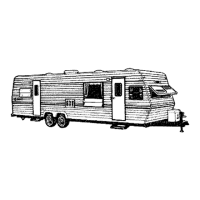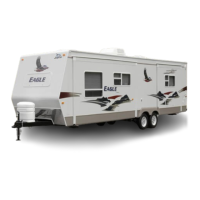166
Refrigerator
The refrigerator is not intended for quick freezing or cooling. We recommend stocking it
with pre-frozen or pre-cooled food when possible. The shelves should not be covered with
paper or plastic and the food items should be arranged so air can circulate freely. Keep the
area at the back of the refrigerator clean and free of debris. Check for obstructions in the
exterior refrigerator vent area (i.e., spider webs, bird nests, etc.). Use a soft cloth to dust o
the debris.
For optimum eciency and performance, it is recommended the refrigerator be checked at
least twice a year as part of the routine maintenance.
For detailed operating and safety information, refer to the manufacturer’s user guide.
If you smell propane gas Follow the directions located in your manu-
facturer’s owner’s manual and in this manual.
If you are using electric to power the refrigerator, make
sure you are connected to a 120-volt power source.
Range Hood (if so equipped)
If your recreational vehicle is equipped with a range hood, it will
be connected to an exterior vent.
The vent has an inner ap with two snaps. This ap can be
snapped shut when the vehicle is in motion, or during storage
to keep insects, debris, snow, rain, etc. from entering the recre-
ational vehicle.
Anytime the stove inside the recreational vehicle is being used,
this ap be unsnapped and the range hood turned ON to
vent fumes outside the vehicle.
Whenever the stove in the RV is being used: The range hood be turned
on, and the inner apbe unsnapped and free to move. Failure to do so
can create an asphyxiation hazard by restricting air ow to this vent.

